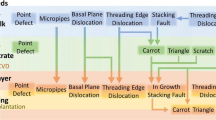Abstract
This work designs an analytic methodology for applying the probe-before-bump procedure to predict probing depth and proposes feasible probing design parameters to avoid excessive probing of the bump pad. Two kinds of multi-level wafers were used to implement the probing experiment, with a single touch down, and an overdrive of 70 µm, 100 µm, 130 µm, and 150 µm by using a vertical probe card. The Young’s modulus and hardness of the two multilevel structures are measured on which the first bump pads are produced by sputtering aluminum onto the SiO2, while the second bump pads are produced by sputtering aluminum onto the copper, creating a pad metal of approximately 1-µm thickness by using the nanoindenter. The test results indicate that the Young’s modulus of the thin film material exceeds that of bulk material by 20–30 GPa. The difference between analytic and experimental probing depth ranges from 2.3% to 8.9%, revealing that the proposed novel analytic model is extremely accurate. Engineers or researchers can use the analytic methodology to accurately predict probing depth and acquire probing parameters that are accurate, cost effective, and efficient, thus eliminating the need to use focused ion beam (FIB) or other measurement instruments to determine the probing depth.
Similar content being viewed by others
References
Q. Tan, C. Beddingfield, and A. Mistry,1999 IEEE/CPMT Int. Electronics Manufacturing Technology Symp. (Piscataway, NJ: IEEE, 1999), pp. 320–324.
K.L. Johnson,Contact Mechanics (Cambridge, United Kingdom: Cambridge University Press, 1985), pp. 56–70.
X. Li and B. Bhushan,IEEE Trans. Magn. 37, 1616 (2001).
T.A. Venkatesh, K.J. Van Vliet, A.E. Giannakopoulos, and S. Suresh,Scripta Mater. 42, 833 (2000).
T. Sugimoto and T. Kawaaguchi,IEEE Trans. Industrial Electron. 44, 696 (1997).
M.S. Guzman, M. Hack, and G. Neubauer,IEEE Int. Reliability Physics Symp. (Piscataway, NJ: IEEE, 1994), pp. 108–113.
W.C. Oliver and G.M. Pharr,J. Mater. Res. 7, 1564 (1992).
K.W. McElhaney, J.J. Vlassak, W.D. Nix, “Determination of Indenter Tip Geometry and Indentation Contact Area for Depth-sensing Indentation Experiments,” Department of Materials Science and Engineering, Stanford University, www.-mse.stanford.edu.
M. O’Hern, “Developments in Diamond Indentation and Scratch Tips: Introducing the AccuTip Family of Diamond Tips,” www.mts.com/nano/XP_specs, 2002.
“TestWorks 4 Software for Nanoindentation Systems,” Version 012, Document No. D1418XPA-10629,MTS Manual (Eden Prairie, MN: MTS Systems Corp., 1999), pp. 1–65.
D.G. Altenpohl,Aluminum: Technology, Applications, and Environment (Warrendale, PA: TMS, 1999), p. 230.
“What is Cobra™,”VTech Japan Presentation Materials (Arlington Heights, IL: VTech Electronics North America, LLC, 2001).
Author information
Authors and Affiliations
Rights and permissions
About this article
Cite this article
Chen, K.M., Chiang, K.N. Developing an analytic methodology to accurately predict probing depth in integrated circuit structures. J. Electron. Mater. 35, 257–265 (2006). https://doi.org/10.1007/BF02692444
Received:
Accepted:
Issue Date:
DOI: https://doi.org/10.1007/BF02692444




